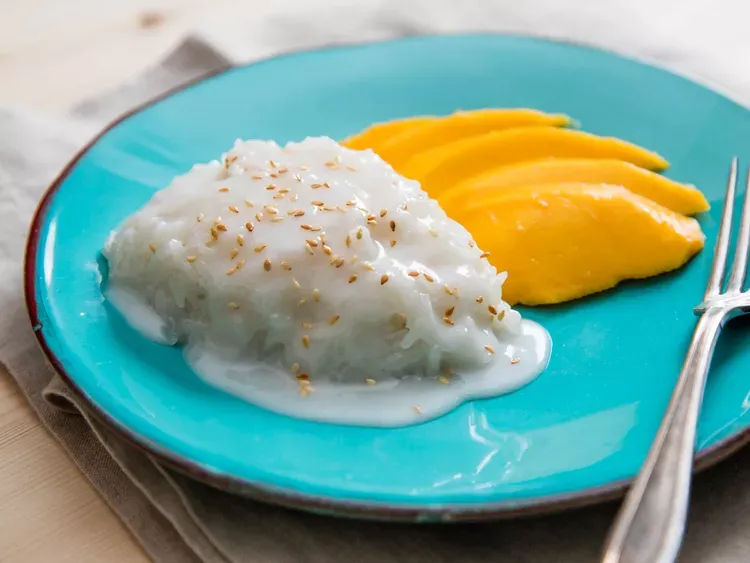See this recipe for Khao Niao Mamuang on Serious Eats!
Note: This recipe takes several hours to prepare the ingredients and make the dish, so it can require some pre-planning.
Ingredients:
- 1 cup sticky or glutinous rice (Having trouble? See this guide to rice varieties)
- 1 (14 oz) can full-fat coconut milk, shaken well, divided into halves
- 1/2 cup sugar
- Salt
- 2 teaspoons cornstarch
- 2 ripe mangoes (peeled, pitted, and sliced)
- Toasted sesame seeds, for garnish (optional)
Instructions are available at this link.
AStory of Cultural Differences:
Today we’re celebrating Asian-American and Pacific Islander (AAPI) Heritage Month with a delicious, sweet sticky rice recipe! Mango, coconut, sesame, and glutinous rice (which is actually gluten-free) all grow native to SouthEast Asia and some Pacific Islands. Sticky rice in particular is a staple in both Laos and nothern Thailand. Indian, Asian, Hawaiian, and Pacific Island cuisines are bright, flavorful, and nutritious, and deeply intertwined in their cultural practices.
Unfortunately, some of these countries’ cultures and cuisines have been subject to Americans’ and other global Westerners’ overwhelming distaste, mocking, and marginalization. India and China are two prominent examples of this; many of the harmful racial stereotypes that Americans associate with these nationalities are related to their foods being unsanitary, smelly, or using poor-quality dish ingredients. Racist sentiments like this are extremely harmful and obviously disrespectful to the cultures they target. During AAPI Heritage Month, it’s important to be extra mindful of the ways we speak about foreign cultures and cuisines.
Diversity is one of the most prominent drivers of progress in America. We must shut down the normalization of harmful racial stereotypes and xenophobia if we want to promote the Franciscan spirit of joyful fraternity. Saint Francis himself was “a brother to the sun, the sea and the wind, yet he knew that he was even closer to those of his own flesh” (Fratelli Tutti). This feeling of fraternal closeness is something that we each need to hold in our hearts when we see people with different ways of speaking, eating, dressing, and living all around the world.
Invitation:
Scroll through the Smithsonian Asian Pacific American Center’s "Care Package" and read/listen to/watch Asians, Indians, Native Hawaiians and Pacific Islanders demonstrate their heritages and cultures and discuss their lived experiences. Learn more about Asian and Pacific Islander art and history, and foster your appreciation for their impacts on American culture and development. Furthering our understanding of the human histories within these groups increases our capacities for anti-racism and anti-xenophobia.
After you look into a few of these resources, we invite you to reflect on the value of diverse social inclusion, as well as the harm of normalized social exclusion. Remember that we are all equal members of a global community, and this May, celebrate and honor the histories, experiences, achievements, and cultures of Asian and Pacific Island nations and peoples.





Post a Comment